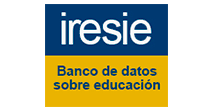WHAT IS A LIFE PROJECT FOR STUDENTS AND EDUCATORS IN THE CURRICULUM? REFLECTIONS ON THE GUIDING NOTEBOOK FOR LIFE PROJECTS OF THE PUBLIC NETWORK OF THE STATE OF MINAS GERAIS
reflexões sobre o Caderno Orientador de Projeto de Vida da rede pública estadual de Minas Gerais
DOI:
https://doi.org/10.5216/ia.v48i1.75018Abstract
This article is part of ongoing research that seeks to investigate how public school teachers in the state of Minas Gerais were trained for the New High School. In this, the Life Project Guiding Notebook for Regular Night High School and Youth and Adult Education was the document analyzed from the Discursive Textual Analysis. Thirty-seven excerpts from the document were selected for the unitarization and categorization process. This sample was configured as units of meaning that were categorized and maintained based on the categories of life project, subject-teacher-effective and youths. The results indicate significant flaws in the treatment of issues involving youth and life projects, which which negatively impact the quality of the teaching work.
KEYWORDS: New High School; Life Project; Youth; Effective-teacher-subject.
Downloads
Published
How to Cite
Issue
Section
License
Copyright (c) 2023 Fábio Júnio Mesquita

This work is licensed under a Creative Commons Attribution-NonCommercial 4.0 International License.
Inter-Ação uses the Creative Commons Attribution 4.0 License for Open Access Journals (Open Archives Initiative - OAI) as the basis for the transfer of rights. Open access means making documents available on the Internet free of charge, so that users can read, download, copy, distribute, print, search, or link to the full text of documents, process them for indexing, use them as input data for software programs, or use them for any other lawful purpose, without financial, legal, or technical barriers.
Authors publishing in this journal agree to the following conditions:
1) Authors retain copyright and grant the journal the right of first publication, with the work simultaneously licensed under the Creative Commons Attribution License, which permits redistribution of the work with attribution and first publication in this journal.
2) Authors are permitted to enter into additional, separate agreements for non-exclusive distribution of the version of the work published in this journal (e.g., for publication in an institutional repository or as a book chapter), with attribution and first publication in this journal.
3) Authors are permitted and encouraged to publish and distribute their work online (e.g. in institutional repositories or on their home page) at any time before or during the editorial process, as this may generate productive changes as well as increase the impact and citation of the published work.















